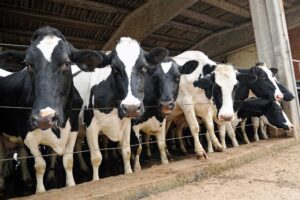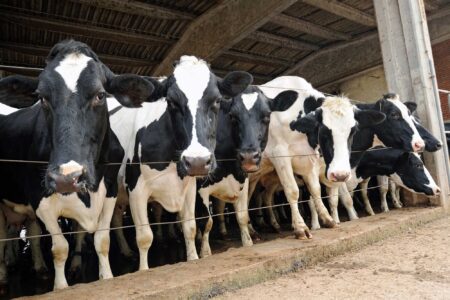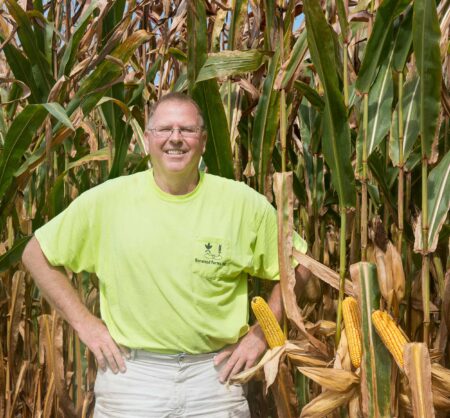Wheat variety selection sets the stage for the entire crop, but there is no single “silver bullet” variety, explained Dennis Pennington, wheat specialist with Michigan State University Extension. Instead, choosing the right wheat is about balancing yield potential, disease resistance, and agronomic fit for the farm.
Yield Is Only Part of the Equation
“Yield is the number one thing to look at,” Pennington said. “But yield alone isn’t enough. No variety wins every trial every year. Look for consistency in the top 10% of plots over multiple years and locations similar to your own.”
Mark Lubbers, WestBred winter wheat technical product manager, agreed that farmers should think beyond yield. “Most growers are chasing yield, but disease tolerance, end-use quality, and agronomic characteristics like standability and maturity all play into that decision,” he said.
Manage for Major Diseases
Two diseases consistently top the list for Midwest and Plains wheat: fusarium head blight (head scab) and wheat streak mosaic virus.
Head scab was especially damaging when wheat followed corn, bringing risks in the form of vomitoxin. “A combination of genetic tolerance and fungicide application are the two key ways to help control that particular disease,” Lubbers said. Pennington agreed, adding that soft white wheats were especially vulnerable: “Soft white wheat growers automatically know they’ve got to put a T3 fungicide (an application made at wheat flowering) because there’s too great of a risk of having Fusarium head blight and high vomitoxin levels in the grain.”
Erick DeWolf, Kansas State University
Wheat streak mosaic, spread by the wheat curl mite, can devastate crops if volunteer wheat isn’t controlled. “Breaking the green bridge by making sure volunteer wheat is dead two weeks before planting is the best defense,” Lubbers explained.
Other diseases such as stripe rust, powdery mildew, and septoria also surfaced depending on the season. Pennington pointed out that knowing a variety’s vulnerabilities in advance allowed farmers to plan management. “If you know the variety is high-yielding but weak on head blight, you need to plan on a T3 fungicide. If it’s vulnerable to stripe rust, then scout and be ready to spray,” he said.
Pennington added that outbreaks often depend on weather patterns. “Storm fronts out of the Gulf carry stripe rust spores north, and they settle randomly based on how far the fronts move,” Pennington said.
Spread Out Risk with Multiple Varieties
Both Lubbers and Pennington emphasize diversifying. Planting three or four different varieties varying in maturity, plant height, and disease packages help spread risk. “We don’t know what each year will bring,” Lubbers said. “That’s why it’s important not to limit your operation to just one or two varieties.”
Staggering maturity also allows farmers to spread out fungicide applications and harvest windows. “It makes the whole operation more manageable,” Pennington noted.
Certified Seed Pays Off
Saving seed might look like a way to cut costs, but both experts caution against it. “Farmers sometimes think saved seed is free, but it can harbor weed seed or disease and be of poor quality,” Lubbers said. Certified seed, properly cleaned and treated, helps ensure vigor and reduced early season risks.
Pennington adds that if farmers do save seed, it needs to come from their best fields and be carefully cleaned and treated to avoid problems like stinking smut, which could lead to rejected grain at the elevator.
Matching Agronomics to the System
Meredith Operations Corp.
Certain traits make a big difference depending on tillage, rotation, or harvest setup. Standability and straw strength are always worth considering. Lubbers stresses the importance of standability for harvest efficiency. Pennington agrees, noting that high yield potential often pushes plants to their limits. “If your wheat isn’t starting to lodge a little, you’re not pushing it hard enough,” he said. Strong straw was what held heavy heads upright when yields were high.
Seedling vigor is another critical trait, particularly in challenging conditions. “In no-till or late planting, seedling vigor is the difference between a stand that thrives and one that struggles,” Lubbers said. Pennington added that management often matters even more than genetics. “Good planting management can matter more than the variety itself,” he explained. “Making sure you’re maintaining uniform seed depth as conditions change across fields is key to getting a good stand.”
Plant height also influences management decisions. Taller varieties are often a better fit for fallow systems, while shorter or medium-height options suit double-crop soybeans where excess straw can complicate planting, Lubbers said.
In drought-prone areas, some farmers are shifting toward western-type varieties. But Lubbers cautioned against going all-in. “Don’t make a knee-jerk reaction — make sure those varieties still meet your other agronomic needs,” he said.
End Use and Market Traits
Depending on geography, end-use factors can also come into play. In soft wheat regions, test weight is more important than protein, while hard red wheat growers have to meet protein targets to avoid discounts. In those cases, a smaller late nitrogen application can help boost protein, Pennington said.
Looking Ahead
Breeding programs are identifying the next breakthroughs, including hybrid wheat and genes with better tolerance to wheat streak mosaic and fusarium head blight. At the same time, climate variability forces farmers to think longer term. “Hot, dry spells followed by heavy rains are becoming more common,” Pennington noted. “Breeders are focusing on varieties that can tolerate these extremes.”
Bottom Line
Lubbers and Pennington’s advice boiled down to three key points:
- Prioritize consistent yield and proven performance in your area.
- Plant multiple certified varieties to spread risk.
- Know each variety’s strengths and weaknesses, and manage accordingly.
“Do your homework,” Pennington said. “Select varieties that have consistently performed well over the last three to five years, plant certified seed, and manage for the traits you’ve chosen. That’s how you grow a good crop.”












